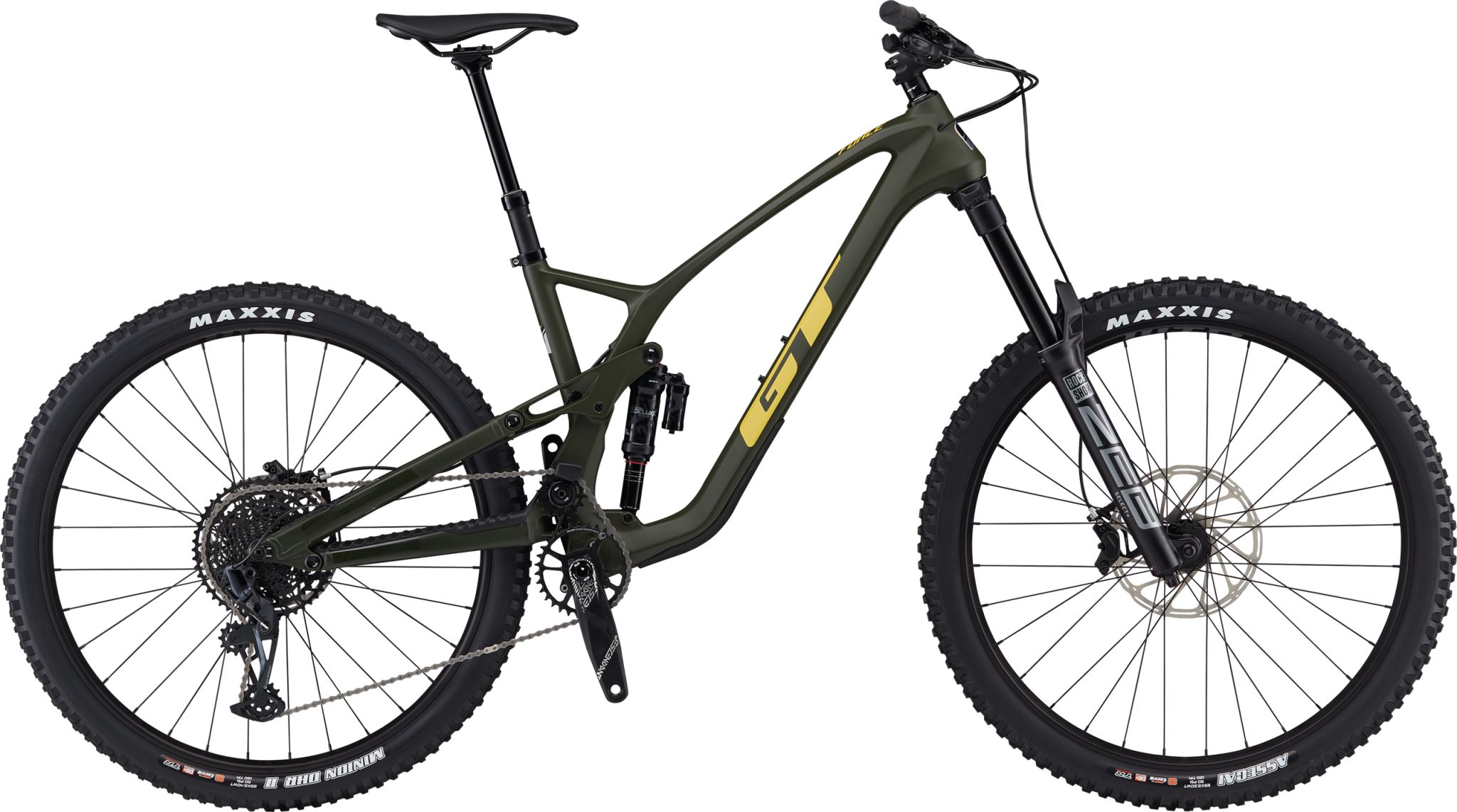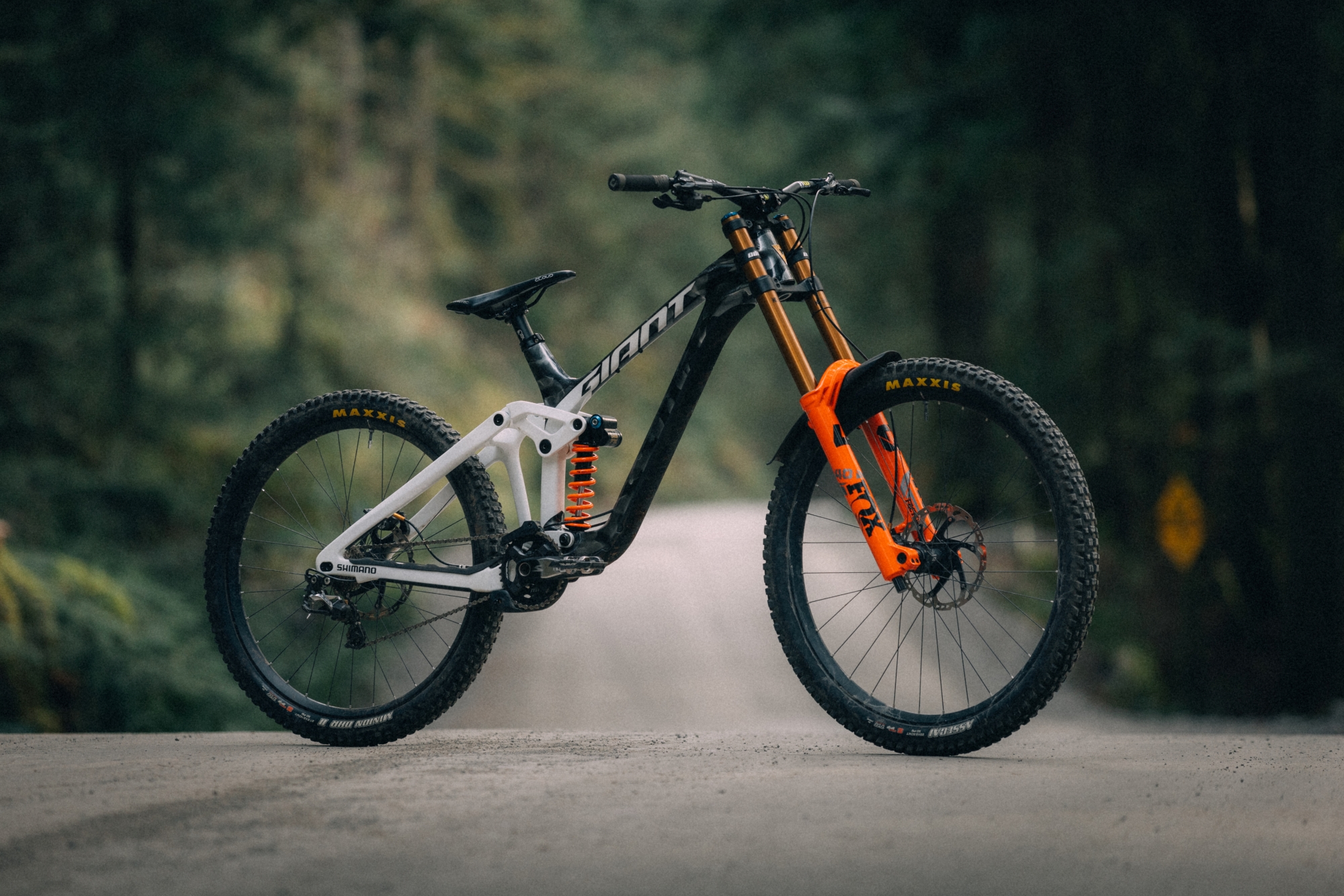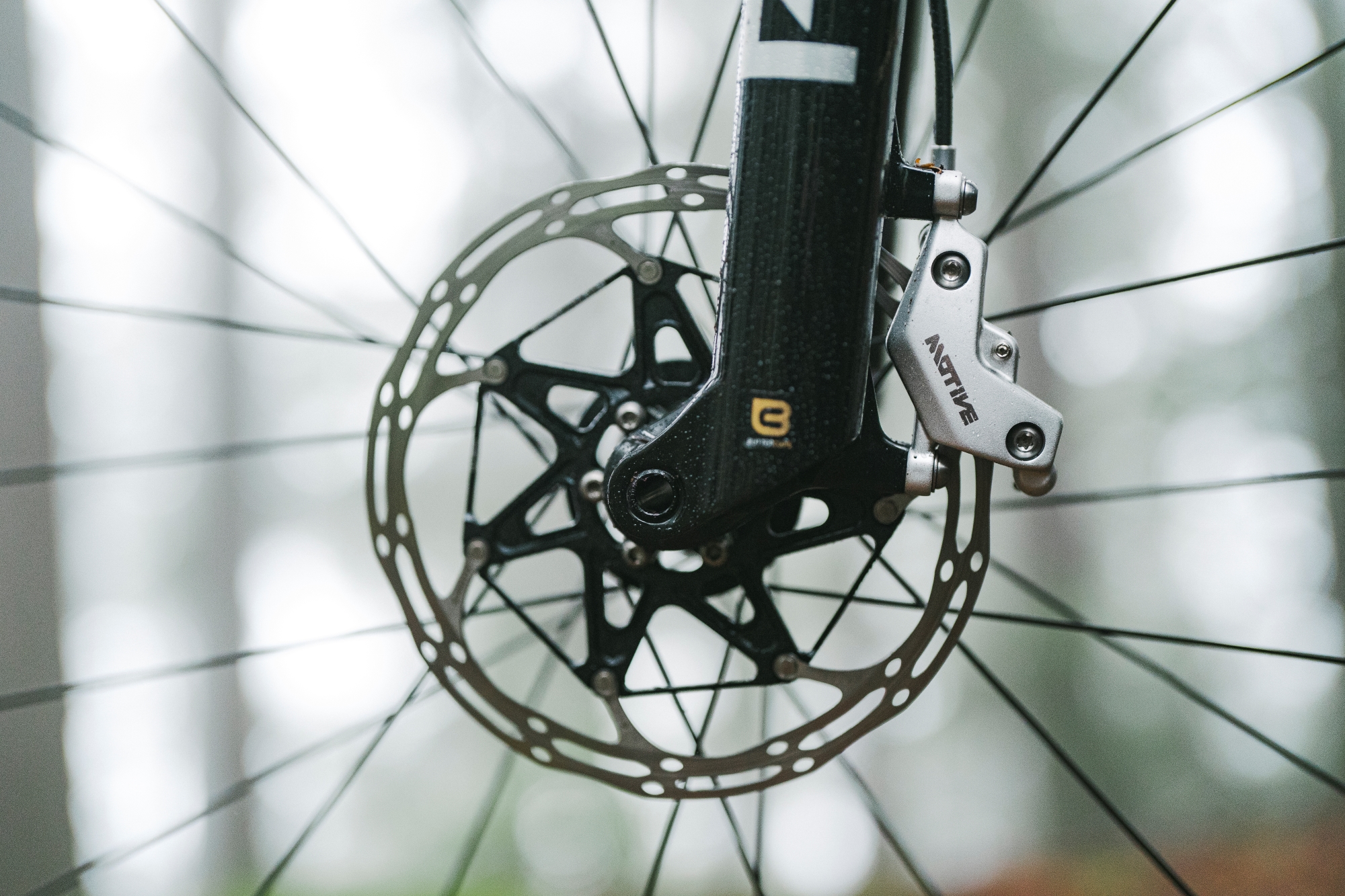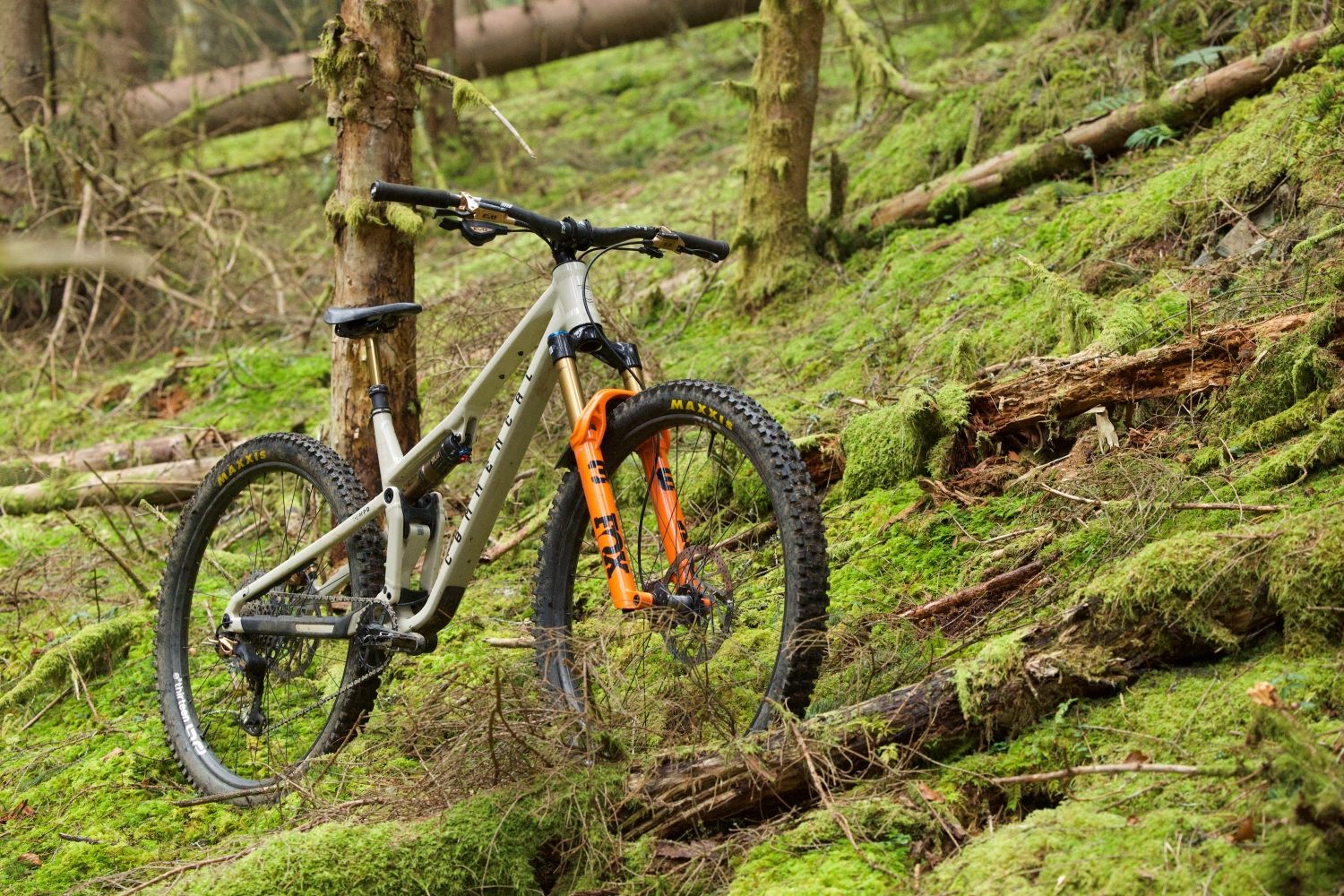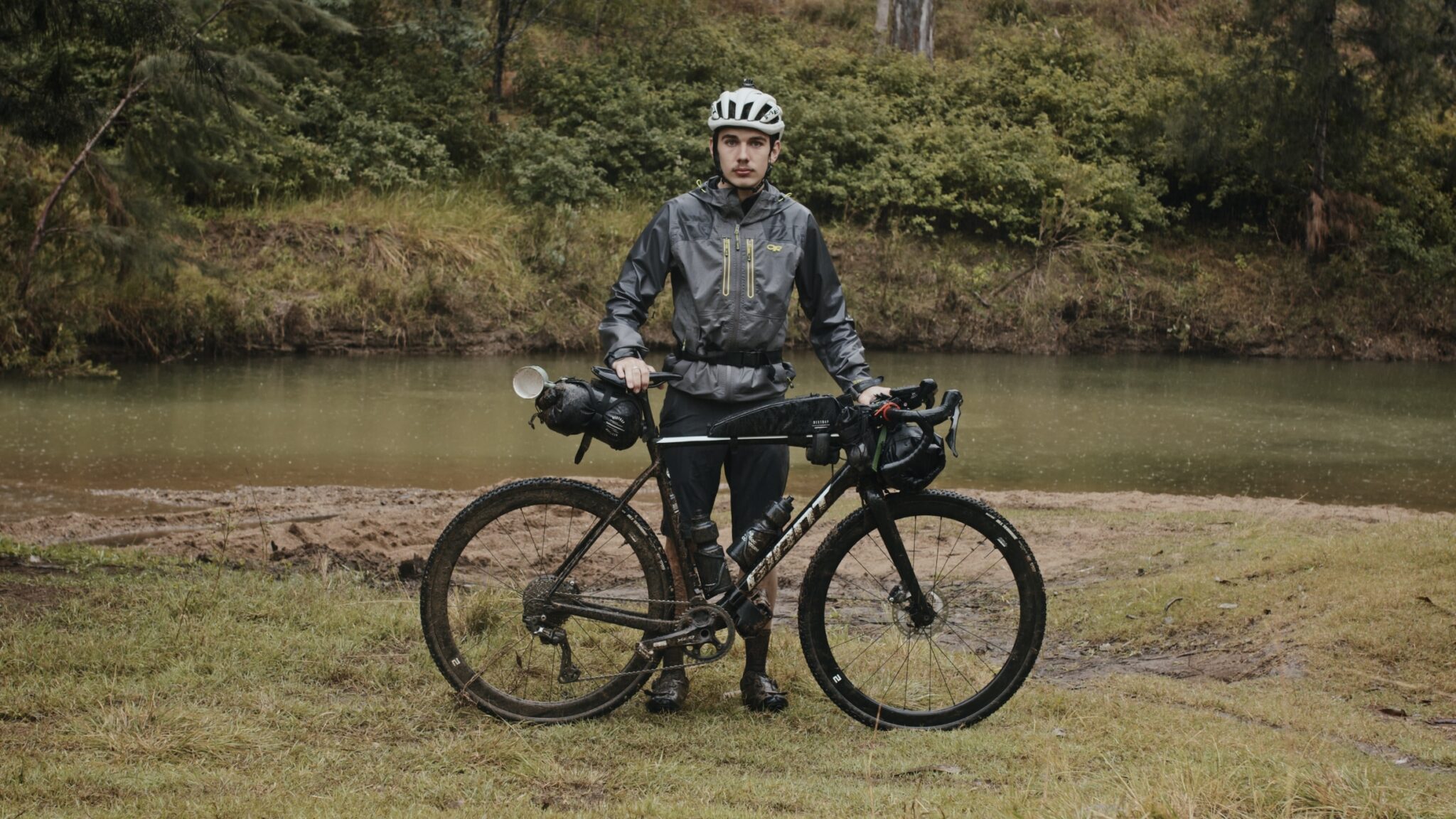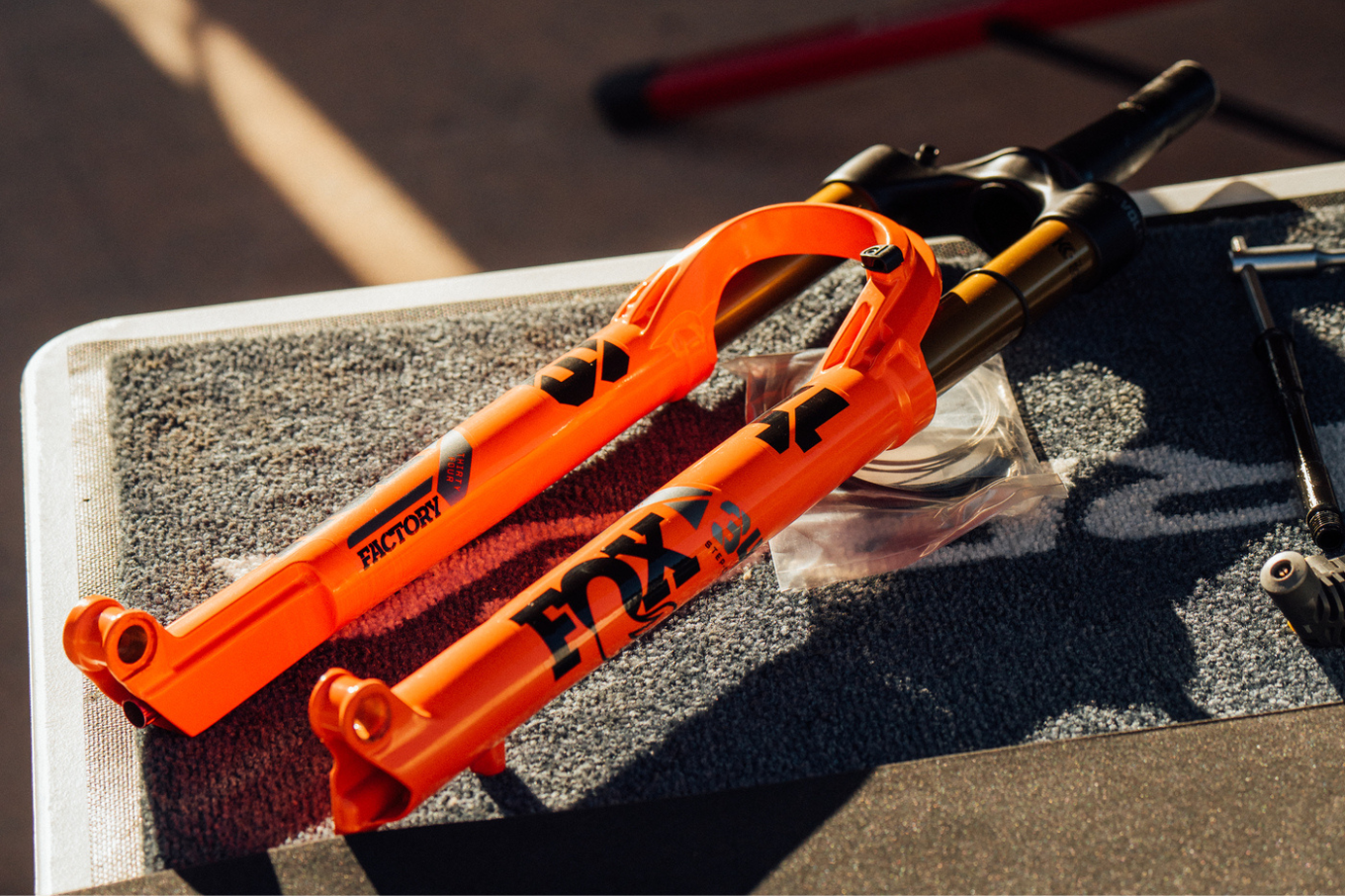TESTED: GT Force Carbon Pro
The GT Force is yet another Enduro bike using a high pivot design. Ryan Walsch puts it to the test.
Words: Ryan Walsch
Photos: GT Bicycles
GT are an old hand in the mountain bike game, and with hardtail pedigree with bikes like the Zaskar, GT can also hang their hat on what they accomplished with the LTS platform around two decades ago. Fast forward to the current day, and GT have been at the coal face, working with their Pro team to deliver winning gravity bikes. And the new GT Force is a perfect example of the fruits of this labour. With pricing starting at $5399.95 for the GT Force Carbon Elite, and $6499.95 for the GT Force Carbon Pro we have on test, the value that GT delivers cannot be argued with. But, what's new on the bikes anyway?
Initial Impressions:
GT have overhauled the Force and brought the chassis inline with their DH race bike the Fury which employs the same LTS (Linkage Tuned Suspension). This linkage is a Horst link, with a higher than normal main pivot above the chain ring rather than inline with it, thus creating a rearward axle path and giving the all new Force rock gobbling abilities. Like all modern high pivot bikes we are seeing flooding the market, in order to reduce the pedal kick back or the effect the suspensions rearward path has on the drivetrain (the chain pulling the cranks) a carefully placed idler needs to be introduced to the system.
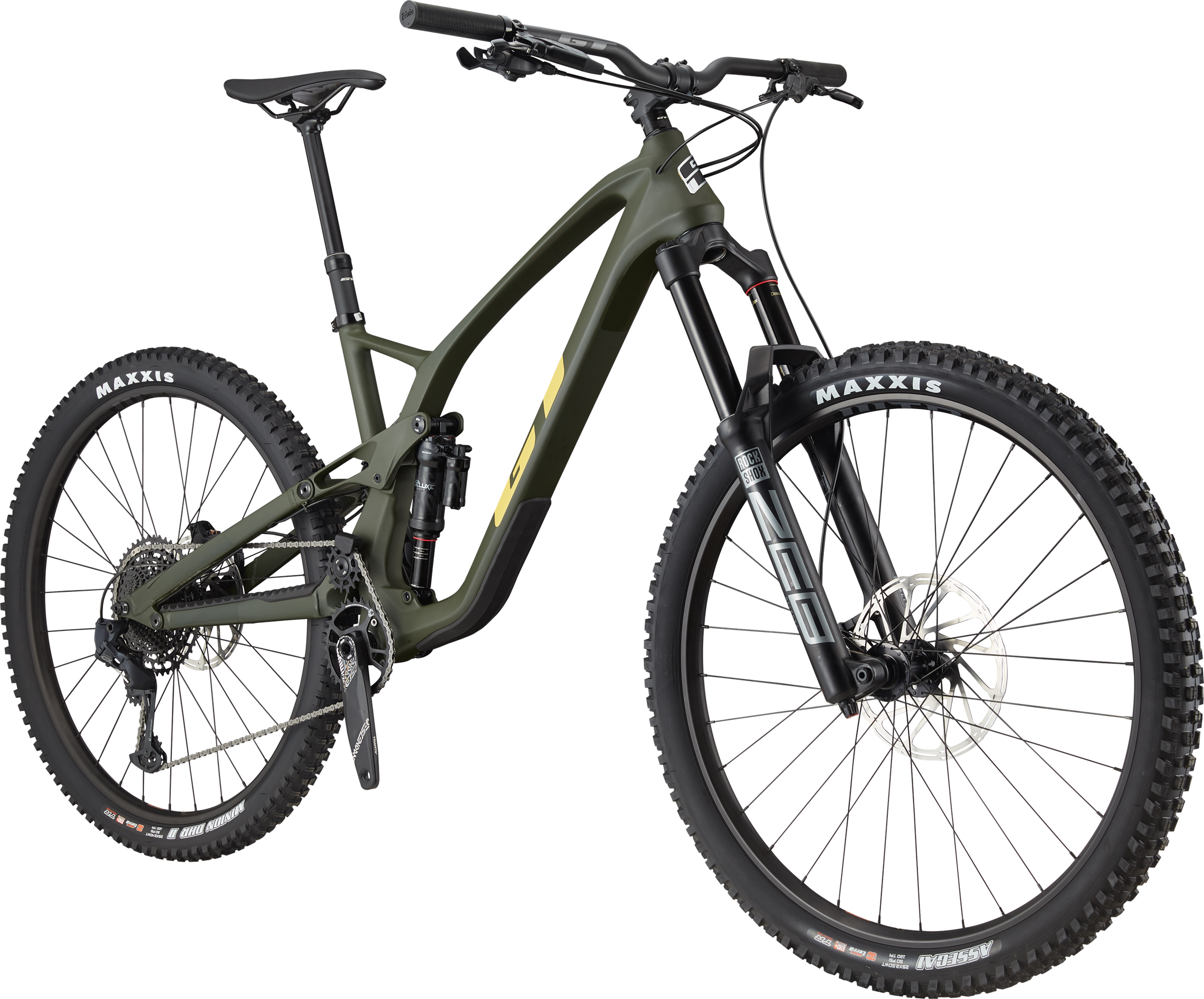
The 78 degree virtual seat tube angle has you sitting right over the bike, in a powerful position to drive those pedals downward on long climbs. This is perfect for the Enduro riders and those who like to dig deep when climbing hills. The new chassis looks sleeker, still utilising GT’s trademark triple triangle mainframe with the uppermost triangle being dubbed frame storage. While this may be far from integrated it’s a nifty spot to keep items you'll need at a moments notice items such as a tube, CO2 inflator, tubeless plugs and levers.
Keeping the GT Force at a fiercely competitive price point should be applauded. GT has cleverly gone with a carbon mainframe and alloy seat stays and chain stays along with a suite of neat in-house components that work a treat. The size large we have on test comes with a generous 170mm dropper post and with its 480mm reach is on the money with room to adjust for a large range of rider heights and shapes. The new Force has an adjustable chain stay length, being able to flip the chip between 435mm and 445mm in length which alters the size large wheelbase from 1270mm to 1280mm respectively without altering the BB height or the rest of the geometry. Both small and medium bikes will come setup in the shorter position out of the box, while the large and extra large bikes will be in the long position. This will give a better ride to both ends of the height chart without the need for two different chain stays – but you can still change it to suit you and your trails. The predecessor’s “flip chip” was at the lower shock mount and adjusted bottom bracket height and head angle slightly and I was surprised to see this addition passed up in place of the chain stay adjustment only.
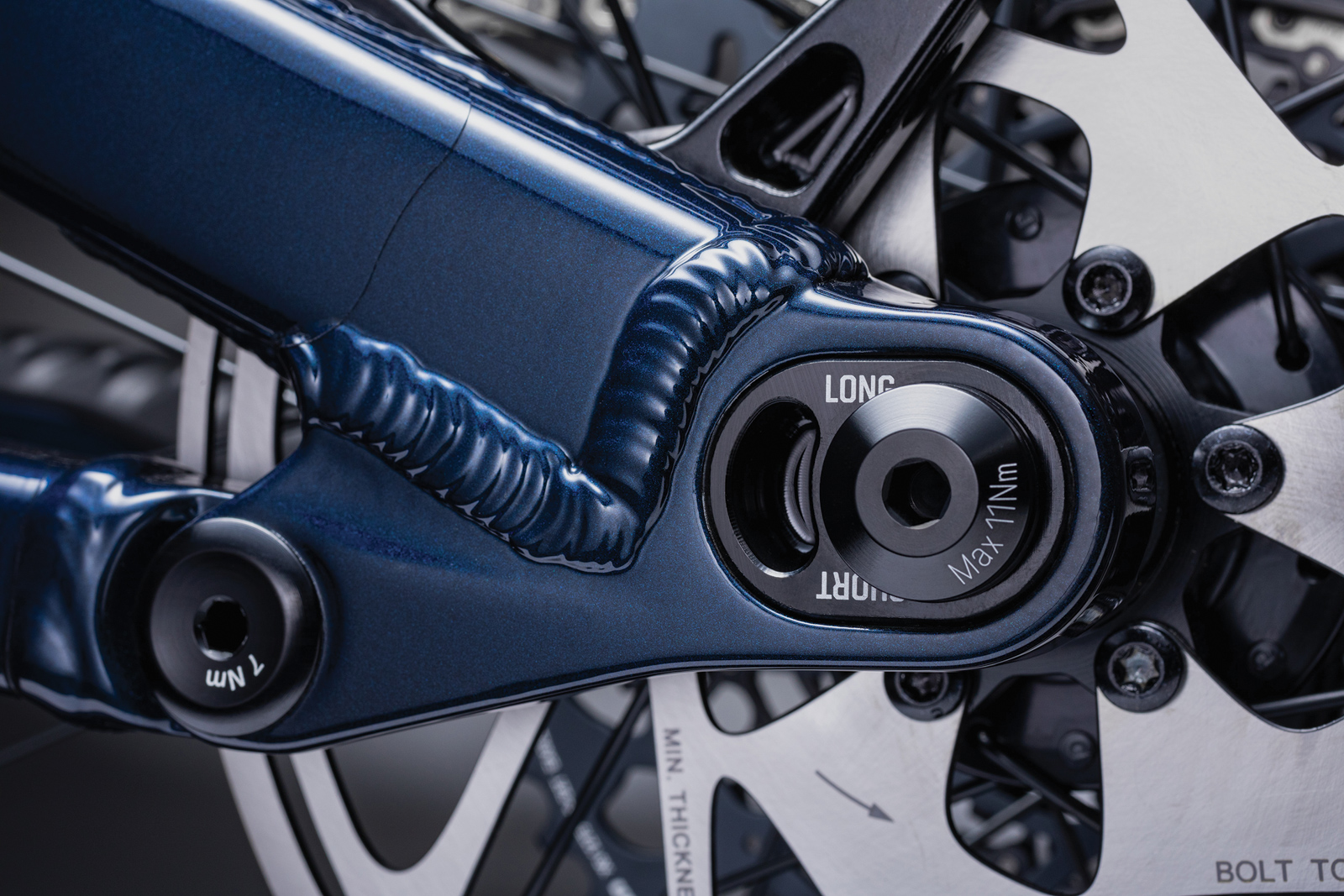
The Force Carbon Pro has been equipped with a blend or SRAM NX and GX components and opts for the extremely powerful and consistent Code R brakes with a 200mm rotor on the back and a much needed 220mm rotor up front. Impressively GT have chosen the RockShox ZEB Select and Super Deluxe Select units to handle the suspension, both sturdy, easy to setup and great to see on a bike priced at $6499.
Grip is taken care of by Maxxis, an EXO+ casing Assegai up front and a EXO+ casing Minion DHR out the back which given the capabilities of this high pivot 160mm frame and 170mm ZEB fork may be a little light on for aggressive trail and enduro riding but sure does keep the overall weight down and ride feel lively.
The highly technical drop test almost always gives a good indication of how quiet a bike is going to be on the trail, the chain stay protection, down tube protection and cable routing all look to be well thought out with good coverage. The tube in tube cable routing running through the top tube sure is neat but does make routing options somewhat limited for our market of predominantly “moto” left hand rear brakers. The cables do exit the top tube quite early and are then cinched to the seat tube with cable ties before following the seat stay to the wheel and while this is the most direct path at static sag, I do wonder how it will hold up or last on rough trails.
On The Trail:
A few adjustments were made to the setup before hitting the trail, the front end is pretty high with a 170mm fork, 130mm head tube, 30mm riser bar and a handful of spacers. I dropped the front end by a full 25mm to get it into a more familiar position and get some much needed weight back on the front wheel. Obviously the Force has been designed with the fastest Enduro racers in mind, riding the steepest of terrain full gas and our humble trail networks have a shallower gradient. Having the adjustability to move this position is welcomed as often manufacturers only provide a few 10mm spacers at best and the correct fit or height can't be achieved comfortably.
How does the idler change the climbing ability of a very sensitive and typically inefficient linkage? Simply put, it transforms the GT Force into a very pleasant bike to climb. The idler is well made and finished, is very smooth under foot (as the chain is pulled over it with all your watt bombs being applied to it) with a neat little chain retention guide. Both suspension and pedalling forces are separated nicely and the Force excels on both fire roads and technical climbs finding traction with ease. The location of the idler is paramount and has been positioned to increase the anti-squat which is noticeable during climbing efforts, the bike sits flat and resists bogging down very well for such a big and supple dual suspension bike. I rode the 445mm chain stay option and after a brief stint in the short 435mm position switched it back into the long position for stability when climbing and descending. It does alter the leverage ratio ever so slightly so a slight adjustment to the rear shocks sag was required.
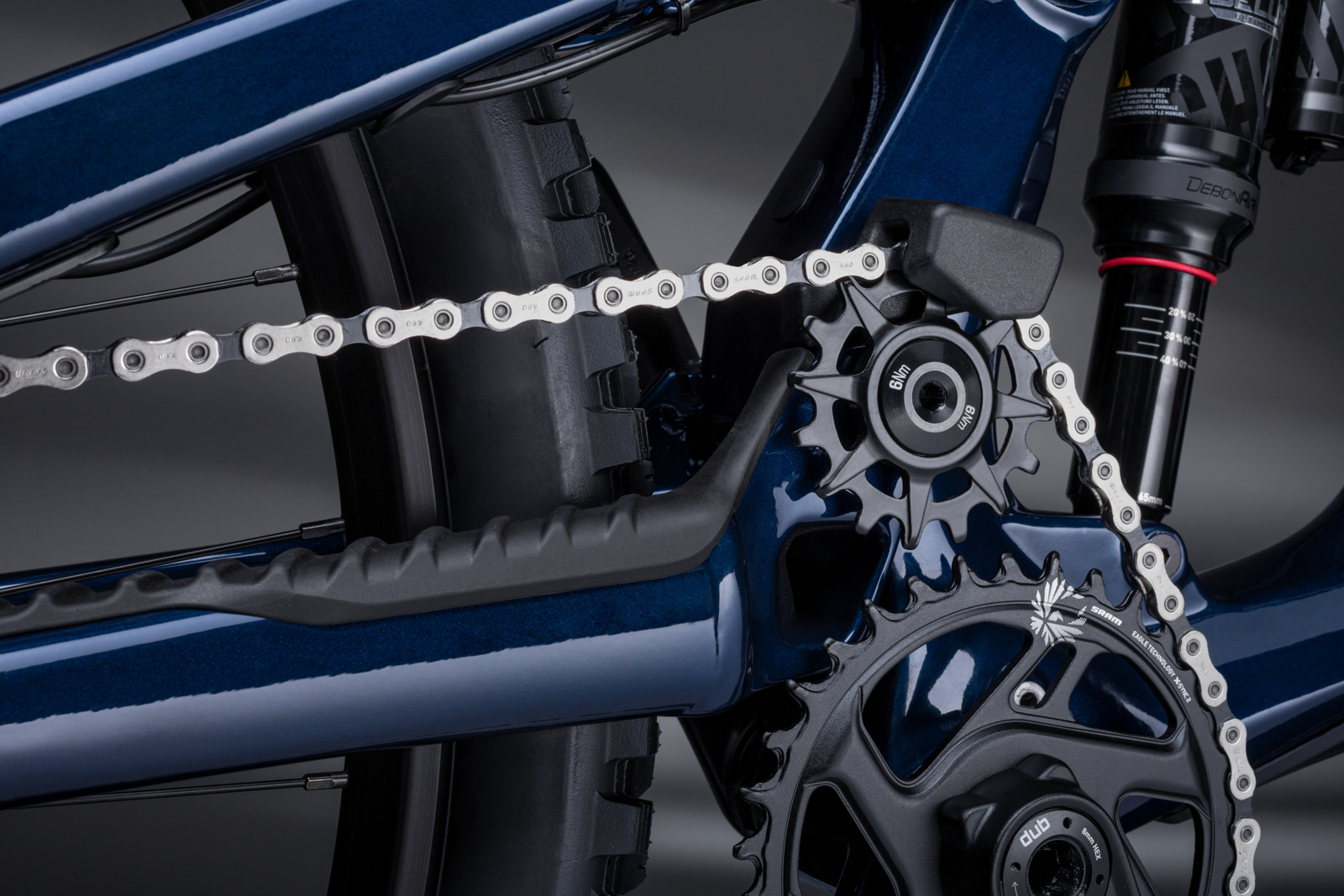
This iteration moves to a larger metric shock, going from a 185mm x 55mm stoke to a 230mm x 65mm which has a much lower leverage ratio and less stress on a bigger unit, it is also one of the most common sizes around and non-proprietary parts make for years of fun without heart ache and empty wallets.
Pointing the Force downhill is where it is most comfortable,throwing caution to the wind is what it excels at. Its ability to eat up square edge hits in quick succession without losing momentum or composure is impressive thanks to the long wheel base, 63.5 degree head angle, high pivot and very little pedal kick back thanks to the large idler. Like with other high pivots I have ridden, they work best with a bit more sag than the average bike and I found the sweet spot close to 35% sag. Unlike many bikes, high pivot bikes often have higher anti-rise values making them less likely to pitch the rider forward when braking instead keeping the bike planted and increasing pressure on the rear tyre. It does require braking to be executed in the right spot (ideally not the roughest part as it does “stiffen up”) and the when done correctly, the bike sticks to the ground very well even with RockShox Select series dampers when the huge 200mm and 220mm equipped Code R brakes are applied.
After more Enduro bike reviews? See below for some long travel machines we've tested recently:
TESTED: Sunn Kern EN 29 Finest
Our Take:
The GT Force is an extremely capable long travel 29er that maintains momentum and composure on a variety of terrain. It offers exceptional value with its high quality components and focus on quality suspension and handling. There were a few little things that could be improved such as the chain and seat stay protectors that started to peel after a few rides. The internal cable routing exits the top tube pretty early and while I do understand the design constraints of the area, they move about and make a bit of noise under compression which is irritating on a otherwise very quiet bike. During our last test ride, we landed pretty heavily and heard a clunk within the frame. Subsequently, the bike started to rattle like nobodies business. With a little investigating we found a rogue piece of debris left over after manufacturing that was somehow lodged within the frame that was now loose. Thankfully it was non structural and easily resolved by the team at PSI Cycling whom arranged a replacement for us. All in all, the GT Force Carbon Pro is a very capable bike for $6499, which is less than some second hand bikes these days.
RRP: $6499
From: https://www.psicycling.com.au

